Small-molecule inhibition of kinesin KIF18A reveals a mitotic vulnerability enriched in chromosomally unstable cancers
- PMID: 38151625
- PMCID: PMC10824666
- DOI: 10.1038/s43018-023-00699-5
Small-molecule inhibition of kinesin KIF18A reveals a mitotic vulnerability enriched in chromosomally unstable cancers
Abstract
Chromosomal instability (CIN) is a hallmark of cancer, caused by persistent errors in chromosome segregation during mitosis. Aggressive cancers like high-grade serous ovarian cancer (HGSOC) and triple-negative breast cancer (TNBC) have a high frequency of CIN and TP53 mutations. Here, we show that inhibitors of the KIF18A motor protein activate the mitotic checkpoint and selectively kill chromosomally unstable cancer cells. Sensitivity to KIF18A inhibition is enriched in TP53-mutant HGSOC and TNBC cell lines with CIN features, including in a subset of CCNE1-amplified, CDK4-CDK6-inhibitor-resistant and BRCA1-altered cell line models. Our KIF18A inhibitors have minimal detrimental effects on human bone marrow cells in culture, distinct from other anti-mitotic agents. In mice, inhibition of KIF18A leads to robust anti-cancer effects with tumor regression observed in human HGSOC and TNBC models at well-tolerated doses. Collectively, our results provide a rational therapeutic strategy for selective targeting of CIN cancers via KIF18A inhibition.
© 2023. The Author(s).
Conflict of interest statement
M.P., B.B., K.H., J.M., K.C., J.D.M., G.C., M.S.N., J.S., R.M., S.C., S.-M.H., R.J.M.K., K.Z.E., U.P.D., T.W., S.W., P.J.B., J.C., S.M., M.P.B., J.R.A., A.C., N.A.T. and P.E.H. are current or former employees and shareholders of Amgen. A.S.B., M.G.R., M.M.R. and J.A.R. declare no conflict of interest.
Figures
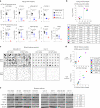
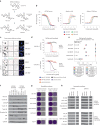
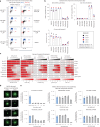

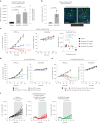
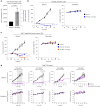



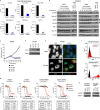


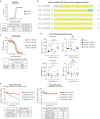

Comment in
-
Stalled molecular motor inhibits tumour growth.Nat Rev Drug Discov. 2024 Feb;23(2):105. doi: 10.1038/d41573-024-00010-w. Nat Rev Drug Discov. 2024. PMID: 38216773 No abstract available.
References
MeSH terms
Substances
LinkOut - more resources
Full Text Sources
Other Literature Sources
Medical
Research Materials
Miscellaneous

